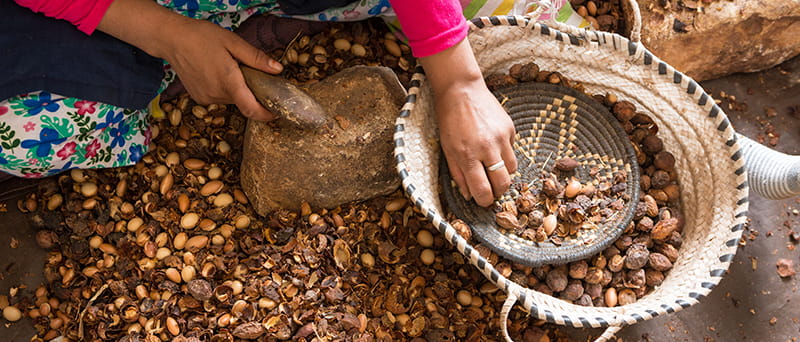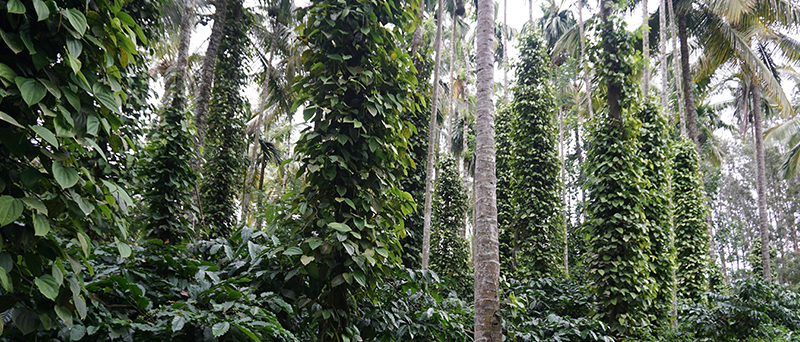Read the latest thoughts and analysis on breakthrough solutions driving impact for a sustainable future
Nature works: 3 projects where conservation boosts livelihoods and delivers climate co-benefits

As climate shocks intensify, protecting nature and biodiversity is essential to keep natural carbon sinks working, shield communities from floods and heat, and stabilize food and water systems. Done well, it also sustains jobs and economies, making nature central to both climate resilience and a livable future. Momentum is building to restore and harness nature’s protective power, creating livelihoods while reducing climate risks.
Policy is catching up, with the Kunming–Montreal Global Biodiversity Framework (30×30), the UN’s intergovernmental agreed definition of nature-based solutions, and new disclosure norms like the Task Force on Nature-related Financial Disclosures (TNFD) moving ambition into action. The real test now is scaling proven models across countries and sectors and embedding them in policy and markets. Below are three conservation approaches that create jobs, steady local economies, and deliver measurable climate co-benefits.
UAE | Mangroves as blue jobs and blue carbon
The United Arab Emirates has pledged 100 million mangrove trees by 2030 and is following through with the Mangrove Restoration Guidelines for the UAE. This national playbook sets out how to site, plant, and monitor the country’s mangroves, to turn seedlings into carbon banks that also keep storm surge and erosion at bay.
The Mangrove Alliance for Climate (MAC), born at COP27, and its Strategy 2031 help efforts like this scale. The MAC enables countries to swap lessons and mobilize funds, while local livelihoods see tangible benefits in the form of nursery jobs, planting crews, ecotourism, and measurement and reporting. Climate wins are equally clear: significant carbon sequestration, sturdier coasts, and healthier fisheries.
Abu Dhabi’s Mangrove Initiative shows how this can work at scale, restoring thousands of hectares that buoy fisheries, protect property, and move the UAE closer to net-zero, with an economic story investors can get behind.

Processing Argan nuts in Morocco
Morocco | Women’s argan cooperatives powering dryland restoration
In southwestern Morocco’s Arganeraie Biosphere Reserve (UNESCO), a nature-economy nexus has grown around drought-hardy argan woodlands managed by communities who know them intimately. Women-led cooperatives transform this native tree into premium oils and value-added products, raising local incomes while creating incentives to keep trees standing, prevent overgrazing, and manage woodlands through traditional stewardship systems. This pairing of community governance with markets is vital in an area facing heat and water stress.
Public and climate finance amplify the model. A Green Climate Fund program is scaling the cooperatives’ “arganiculture,” orchards designed with soil-and-water smarts, to link rural livelihoods with mitigation and adaptation. The Food and Agricultural Organization (FAO) of the UN’s Living Lab brings local actors together to upgrade agricultural processing, steward landscapes, and drought-proof value chains. Together, these steps offer a practical, livelihood-first pathway that restores drylands and builds climate resilience.
As demand for the cooperatives’ products rises and processing uses more machinery, independent reviews show we must watch closely who actually benefits and whether jobs are safe and fair. When income reaches local communities, landscapes recover and wildlife returns, but only with clear rules, fair contracts, and real oversight.

Robusta coffee trees intercropped with coconut and pepper trees in a farm with agroforestry planting model in Karnataka, India
India | Farmer-led agroforestry that diversifies income and locks up carbon
In India, policy plays matchmaker between trees and farms. In 2014, India rolled out the world’s first National Agroforestry Policy, clarifying harvest and transit rules, and boosting planting material and extension. The idea is simple and powerful: help smallholder farmers slot fruit, nut, timber, and fodder trees into their fields so yields, profits, and ecosystem services all improve.
The resulting microclimates and diversified income soften heat and drought while building resilience. The policy also means more carbon stored in wood, soils, and importantly, deeper underground. Studies from across regions show that when trees return to farms, soils store more carbon, both near the surface and deep underground. These gains make farmland more productive and more resilient to heat and drought.
Agroforestry also aligns agriculture, environment, and rural-development agencies, boosting rural SMEs like seedling nurseries, simple processing units, and cold-chain storage and connecting them to higher-value markets. When these businesses are backed by low-interest public loans and purchase commitments from buyers, the whole system becomes attractive for larger investors. Trees on farms translate to steadier incomes today with real climate benefits tomorrow, helping entire farming regions, not just a few plots, cope with heat and drought and cut emissions.
What these models teach us
These examples echo cross-cutting lessons outlined in the insights report from Abu Dhabi Sustainability Week’s Advisory Committee on Nature and Biodiversity. To lift promising pilots into investment-grade portfolios: set clear, standardized metrics (e.g., TNFD-aligned) so results are trusted and comparable, integrate climate and nature goals rather than treating them separately, and blend public and private finance to scale “no-regrets” nature-based solutions.
When stewardship is funded, standards are clear, and capital is blended, nature becomes reliable infrastructure, not charity. Protecting ecosystems de-risks livelihoods, attracts capital, and cuts emissions now. The task ahead is delivery at scale, so communities everywhere can turn living landscapes into lasting prosperity, a conversation front and center at Abu Dhabi Sustainability Week 2026 in January, where leaders from government, finance, and civil society will advance this agenda together.
Policy is catching up, with the Kunming–Montreal Global Biodiversity Framework (30×30), the UN’s intergovernmental agreed definition of nature-based solutions, and new disclosure norms like the Task Force on Nature-related Financial Disclosures (TNFD) moving ambition into action. The real test now is scaling proven models across countries and sectors and embedding them in policy and markets. Below are three conservation approaches that create jobs, steady local economies, and deliver measurable climate co-benefits.
UAE | Mangroves as blue jobs and blue carbon
The United Arab Emirates has pledged 100 million mangrove trees by 2030 and is following through with the Mangrove Restoration Guidelines for the UAE. This national playbook sets out how to site, plant, and monitor the country’s mangroves, to turn seedlings into carbon banks that also keep storm surge and erosion at bay.
The Mangrove Alliance for Climate (MAC), born at COP27, and its Strategy 2031 help efforts like this scale. The MAC enables countries to swap lessons and mobilize funds, while local livelihoods see tangible benefits in the form of nursery jobs, planting crews, ecotourism, and measurement and reporting. Climate wins are equally clear: significant carbon sequestration, sturdier coasts, and healthier fisheries.
Abu Dhabi’s Mangrove Initiative shows how this can work at scale, restoring thousands of hectares that buoy fisheries, protect property, and move the UAE closer to net-zero, with an economic story investors can get behind.

Processing Argan nuts in Morocco
Morocco | Women’s argan cooperatives powering dryland restoration
In southwestern Morocco’s Arganeraie Biosphere Reserve (UNESCO), a nature-economy nexus has grown around drought-hardy argan woodlands managed by communities who know them intimately. Women-led cooperatives transform this native tree into premium oils and value-added products, raising local incomes while creating incentives to keep trees standing, prevent overgrazing, and manage woodlands through traditional stewardship systems. This pairing of community governance with markets is vital in an area facing heat and water stress.
Public and climate finance amplify the model. A Green Climate Fund program is scaling the cooperatives’ “arganiculture,” orchards designed with soil-and-water smarts, to link rural livelihoods with mitigation and adaptation. The Food and Agricultural Organization (FAO) of the UN’s Living Lab brings local actors together to upgrade agricultural processing, steward landscapes, and drought-proof value chains. Together, these steps offer a practical, livelihood-first pathway that restores drylands and builds climate resilience.
As demand for the cooperatives’ products rises and processing uses more machinery, independent reviews show we must watch closely who actually benefits and whether jobs are safe and fair. When income reaches local communities, landscapes recover and wildlife returns, but only with clear rules, fair contracts, and real oversight.

Robusta coffee trees intercropped with coconut and pepper trees in a farm with agroforestry planting model in Karnataka, India
India | Farmer-led agroforestry that diversifies income and locks up carbon
In India, policy plays matchmaker between trees and farms. In 2014, India rolled out the world’s first National Agroforestry Policy, clarifying harvest and transit rules, and boosting planting material and extension. The idea is simple and powerful: help smallholder farmers slot fruit, nut, timber, and fodder trees into their fields so yields, profits, and ecosystem services all improve.
The resulting microclimates and diversified income soften heat and drought while building resilience. The policy also means more carbon stored in wood, soils, and importantly, deeper underground. Studies from across regions show that when trees return to farms, soils store more carbon, both near the surface and deep underground. These gains make farmland more productive and more resilient to heat and drought.
Agroforestry also aligns agriculture, environment, and rural-development agencies, boosting rural SMEs like seedling nurseries, simple processing units, and cold-chain storage and connecting them to higher-value markets. When these businesses are backed by low-interest public loans and purchase commitments from buyers, the whole system becomes attractive for larger investors. Trees on farms translate to steadier incomes today with real climate benefits tomorrow, helping entire farming regions, not just a few plots, cope with heat and drought and cut emissions.
What these models teach us
These examples echo cross-cutting lessons outlined in the insights report from Abu Dhabi Sustainability Week’s Advisory Committee on Nature and Biodiversity. To lift promising pilots into investment-grade portfolios: set clear, standardized metrics (e.g., TNFD-aligned) so results are trusted and comparable, integrate climate and nature goals rather than treating them separately, and blend public and private finance to scale “no-regrets” nature-based solutions.
When stewardship is funded, standards are clear, and capital is blended, nature becomes reliable infrastructure, not charity. Protecting ecosystems de-risks livelihoods, attracts capital, and cuts emissions now. The task ahead is delivery at scale, so communities everywhere can turn living landscapes into lasting prosperity, a conversation front and center at Abu Dhabi Sustainability Week 2026 in January, where leaders from government, finance, and civil society will advance this agenda together.
More Articles
27 NOVEMBER 2025
Energy Transformation
From pledge to policy: how the UAE is turning climate ambition into action
26 NOVEMBER 2025
Decarbonization
Carbon markets in motion: how a first-of-its-kind methodology unlocks the next wave of climate finance
16 OCTOBER 2025
Food and Water


